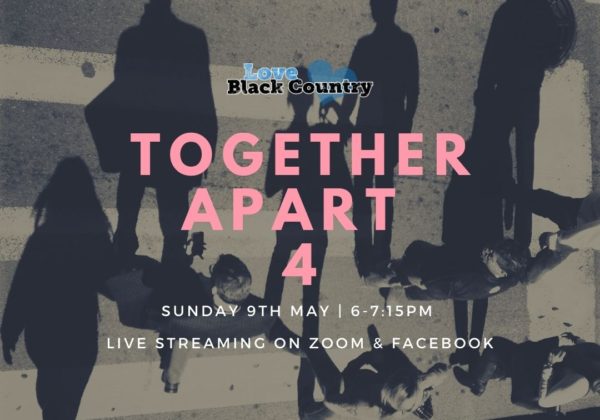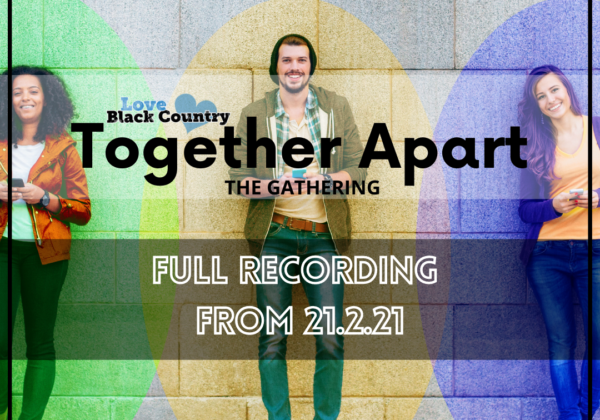
The New Digital Church – streaming your content online
COVID-19 has introduced the world to live streaming and meeting people’s needs in the digital space. Churches, businesses and charities are looking to engage people online and there are many tools out there to do it!
Just like with any technical solution, I haven’t managed to find the perfect solution to streaming Church and business, but I’ve found a few. Here are a few tips for making your online streams work well and be as engaging as possible.
-
Is ‘live’ the right choice?
As you see a thousand organisations jump to live stream you may feel the urge to rush there yourself as well. However, now is the time to stop and consider: is it right for your organisation?
Audience:
Live streaming is a great way to leverage your existing audience. However, if you don’t already have an audience on social media you may still need to spend the time and effort to build that audience. Live streaming by itself won’t do build the audience for you. Granted, live streaming has the potential to grow your social media audience if the people watching the stream find the content valuable enough to share.
Content:
Live streaming is a way to connect directly with audiences. It is more intimate than other forms of online communications and any mistakes will be permanently on the public record.
Making a traditional video announcement might be a better approach for you and it allows you to edit your message, add details, multiple faces, footage of events and much more before you send it to your audience. It is also not going to fall victim to poor internet connection. With a traditional live stream it’s you and your webcam on your face.
During your live stream you should also engage your audience as much as possible. You will need to respond to questions in the stream chat, and you will need to ask people questions and invite them to participate.
Internet Speeds:
An unfortunate element of the current way we access the internet is that our upload speeds are considerably lower than our download speeds. This is important because when you are live streaming, you are uploading information constantly. Check out your upload speed by visiting a website like: https://www.speedtest.net. This will show your download and upload speed. To stream a decent quality you will require an upload speed of 5-6mb per second. Be aware that your mobile data may well be faster than your Wifi.
It’s important that you don’t go into live streaming if your internet speed isn’t up to the task. Your audience will be frustrated by frequent cut outs and it may damage your ability to draw an audience in the future.
-
Pick the right tool, and use it well
There are a multitude of cameras and pieces of equipment to help make your stream incredible. With the right hardware you could have multiple cameras, cut aways to pre recorded content, high quality songs, interviews and much more.
However, with the coronavirus virus forcing many to self-isolate, live streaming will be often be a one-person endeavour. So keep it simple and inexpensive.
Webcam or Phone?
This will largely depend upon your internet speed and the platform you choose. But you should be aware that modern smart phones typically have better cameras than your laptop. Cheaper laptops typically have very poor webcams. But you should note that for a live stream, visual quality isn’t everything. Audio is King. Modern smart phones typically have good microphones, and mics on laptops really can vary. If you can plug in a better microphone, or a headset, you definitely should.
The advice here is; test it, test it and test it again! Record yourself on your equipment and see what works best before you go live. You could also make a new account on a social media platform like YouTube, go live, and see what it looks like!
-
Pick the right social media platform, fill it with content – and stick with it.
Facebook Live, Youtube Live, Vimeo Live, Twitch, Livestream – there are lots of platforms to live stream on.
If you can only pick one, then the best choice is the one which your audience is already on!
If you want to grow your audience, consider using www.restream.io. This (paid) service allows you to stream to multiple locations at once. One great use for this is to stream to your Facebook audience and YouTube at the same time.
The advantage of YouTube is that you can embed YouTube streams directly on your website, so that those without Facebook or YouTube accounts, or technical knowledge, can watch along. The disadvantage of YouTube is that unless you already have a YouTube channel with a good amount of subscribers, it can be harder for people to find your content.
Facebook also depends on you already having an audience on that platform. However, it is easier for your existing followers to share your stream on Facebook. Another crucial thing to understand is that Facebook prioritises live streams. Whilst a normal video or a status update might get lost in the busy amount of content on Facebook, live streams move to the top of the pile – and everyone who follows you gets a notification telling them you’re live.
For Facebook, make sure you’re not posting with your personal account, but with your organisation’s page account. You can post your stream to the public on your page, or you can stream private streams to Facebook groups – the choice is yours.
Wherever you live stream, you should do it at the same time and on the same platform each week. Consistency is crucial to growing your audience. You should be realistic with what expectations you give your audience. If you promise daily content, you must deliver that.
This will also help you to advertise your stream. Do not just hit the ‘go live’ button and hope people find you. Use your regular communication channels to tell people when and where you will be live – and also what to expect from your content.
-
Wait! and be personal.
There is a simple, short, golden rule of streaming to social media; when possible you should spend the first 5-10 minutes welcoming and talking to your stream audience before you jump into your content. This gives people time to join the stream and not miss anything important. It also enables you to begin interacting with people from the very beginning.
Respond to chat messages with a verbal response. Mention people by name and be personal with your responses. On a live stream you are your organisation’s brand.
Streams typically have a 10-120 second delay, so take your time and don’t expect responses to happen the second you ask for them.
If you can, go online 5 minutes before your advertised time. Depending on your software, you can mute your microphone, turn off the video and leave a message saying “Going live at 8pm”. If people switch on at the precise time you advertised and you’re not there, they will leave.
-
Re-use your content, carefully.
The live stream content should be specific to its audience, but it is important to re-use material rather than re-create it entirely. That’s simple economics!
Download your stream video, cut out the audience interaction parts, cut out the times you scratch your chin, or stutter for a minute thinking of an answer to a question and then release that video as a ‘highlights from our stream’ for those that missed it, or would prefer watching a summarised version. You could also take the audio from the video, edit it a little and release it as a podcast.
-
Try some advanced tricks!
Limit the audience and reap the rewards
Think carefully before you try and replicate online what you usually do in a church building. It’s a different environment. Is a 45 minute sermon the best way to care for your employees, audience or congregation in these challenging times? One strategy is to invite people into smaller groups and run ‘webinars’. Bible studies, pastoral chats, even worship, could be performed to smaller groups of 6-10 people on meeting software like Zoom. This more intimate setting may make people feel more relaxed to share their challenges and lets them appear on the camera too.
How can you also replicate those conversations that happen in churches and live events after the service or presentation has finished? These are rich and meaningful moments.
In Zoom, you can do this by giving a sermon or presentation and then splitting your audience into small groups to discuss it.
Multiple people on one stream
Everyone appreciates a range of faces and personalities, rather than just a single presenter. Why not use the software to interview people, or invite different people to your live stream?
For example, with the more expensive packages of Zoom you can live stream your group meetings to Facebook. You could invite two other people to join your live stream and discuss an issue or a Bible verse with them. A cheaper solution is using Ecamm.com. Ecamm.com gives you some great tools for your livestream, such as changing the live stream background and adding text to your screen. It also lets you stream Skype calls too, so you can share with the world a number of hosts sharing content.
That’s all the advice for now but there is plenty more to learn! Please get in touch if we can help you in any way.
Related posts
 A magnificent moment! - Together Festival 23 took place on Saturday 8th July. You can read our account of the day here.
A magnificent moment! - Together Festival 23 took place on Saturday 8th July. You can read our account of the day here. Churches work together to tackle youth unemployment - In order to tackle the growing unemployment statistics amongst 16-24 year-olds, central government has invested £2 billion in an initiative called “Kickstart” and churches across the Diocese of Lichfield are taking full advantage of it.
Churches work together to tackle youth unemployment - In order to tackle the growing unemployment statistics amongst 16-24 year-olds, central government has invested £2 billion in an initiative called “Kickstart” and churches across the Diocese of Lichfield are taking full advantage of it. Together Apart 4 – A Year in Lockdown - We're happy to announce that we will be hosting our 4th regional Together Apart gathering on Sunday 9th May at 6pm, live on Facebook and Zoom.
Together Apart 4 – A Year in Lockdown - We're happy to announce that we will be hosting our 4th regional Together Apart gathering on Sunday 9th May at 6pm, live on Facebook and Zoom. Increasing need for education chaplaincy as schools return - As they return to school on 8th March after months out of formal education, thousands of children and young people across the Black Country will require far greater support than simply what school teachers are able to offer. Local churches can provide essential pastoral support for schools through chaplaincy partnerships and this has never been more essential than it is now.
Increasing need for education chaplaincy as schools return - As they return to school on 8th March after months out of formal education, thousands of children and young people across the Black Country will require far greater support than simply what school teachers are able to offer. Local churches can provide essential pastoral support for schools through chaplaincy partnerships and this has never been more essential than it is now. Together Apart 3 – Watch it again! - On Sunday 21st February, we hosted Together Apart 3, a virtual gathering on Zoom and live-streamed to Facebook. The evening saw hundreds of Christians from churches all over the Black Country to celebrate the things that God is doing in our region and imagine what else He may have planned. You can watch the full meeting here.
Together Apart 3 – Watch it again! - On Sunday 21st February, we hosted Together Apart 3, a virtual gathering on Zoom and live-streamed to Facebook. The evening saw hundreds of Christians from churches all over the Black Country to celebrate the things that God is doing in our region and imagine what else He may have planned. You can watch the full meeting here.